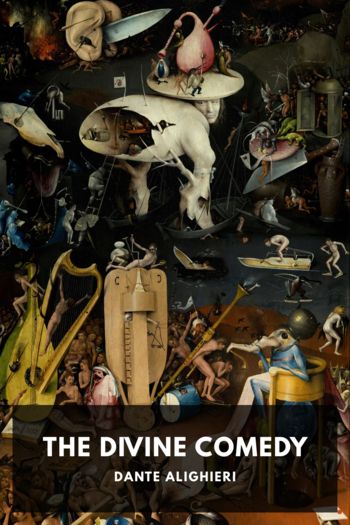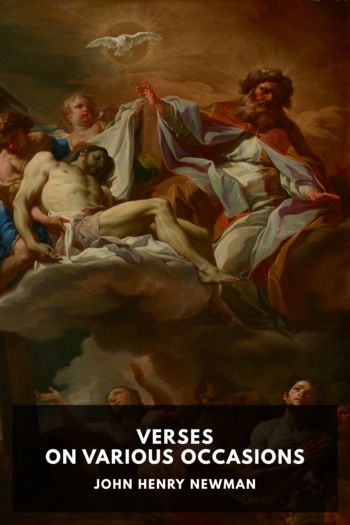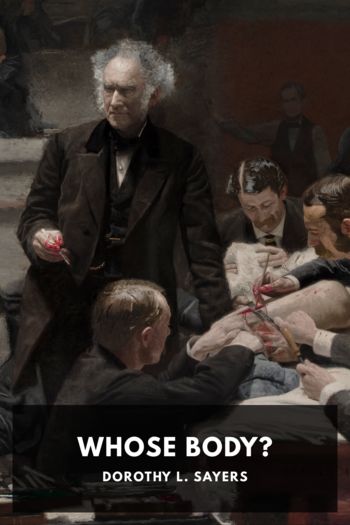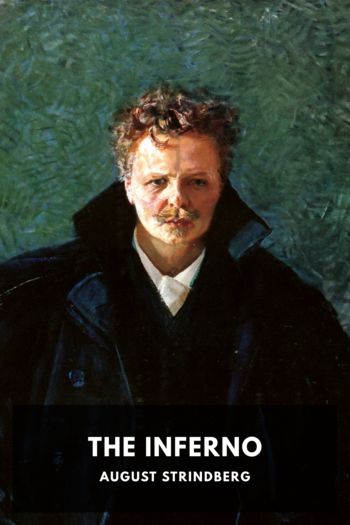The Divine Comedy, Dante Alighieri [best thriller novels of all time TXT] 📗

- Author: Dante Alighieri
Book online «The Divine Comedy, Dante Alighieri [best thriller novels of all time TXT] 📗». Author Dante Alighieri
↩
Christ’s descent into Limbo, and the earthquake at the Crucifixion. ↩
This is the doctrine of Empedocles and other old philosophers. See Ritter, History of Ancient Philosophy, Book V Chap. VI. The following passages are from Mr. Morrison’s translation:—
“Empedocles proceeded from the Eleatic principle of the oneness of all truth. In its unity it resembles a ball; he calls it the sphere, wherein the ancients recognized the God of Empedoocles. …
“Into the unity of the sphere all elementary things are combined by love, without difference or distinction: within it they lead a happy life, replete with holiness, and remote from discord:
They know no god of war nor the spirit of battles.
Nor Zeus, the sovereign, nor Cronos, nor yet Poseidon,
But Cypris the queen …
“The actual separation of the elements one from another is produced by discord; for originally they were bound together in the sphere, and therein continued perfectly unmovable. Now in this Empedocles posits different periods and different conditions of the world; for, according to the above position, originally all is united in love, and then subsequently the elements and living essences are separated. …
“His assertion of certain mundane periods was taken by the ancients literally; for they tell us that, according to his theory. All was originally one by love, but afterwards many and at enmity with itself through discord.”
↩
The Centaurs are set to guard this Circle, as symbolizing violence, with some form of which the classic poets usually associate them. ↩
Chaucer, “The Monkes Tale”:—
“A lemman had this noble champion,
That highte Deianire, as fresh as May;
And as thise clerkes maken mention,
She hath him sent a sherte fresh and gay:
Alas! this sherte, alas and wala wa!
Envenimed was sotilly withalle.
That or that he had wered it half a day,
It made his flesh all from his bones falle.”
Chiron was a son of Saturn; Pholus, of Silenus; and Nessus, of Ixion and the Cloud. ↩
Homer, Iliad, XI 832:—
“Whom Chiron instructed, the most just of the Centaurs.”
Hawthorne gives a humorous turn to the fable of Chiron, in the Tanglewood Tales, p. 273:—
“I have sometimes suspected that Master Chiron was not really very different from other people, but that, being a kindhearted and merry old fellow, he was in the habit of making believe that he was a horse, and scrambling about the schoolroom on all fours, and letting the little boys ride upon his back. And so, when his scholars had grown up, and grown old, and were trotting their grandchildren on their knees, they told them about the sports of their school days; and these young folks took the idea that their grandfathers had been taught their letters by a Centaur, half man and half horse. …
“Be that as it may, it has always been told for a fact, (and always will be told, as long as the world lasts,) that Chiron, with the head of a schoolmaster, had the body and legs of a horse. Just imagine the grave old gentleman clattering and stamping into the schoolroom on his four hoofs, perhaps treading on some little fellow’s toes, flourishing his switch tail instead of a rod, and, now and then, trotting out of doors to eat a mouthful of grass!”
↩
Mr. Ruskin refers to this line in confirmation of his theory that “all great art represents something that it sees or believes in; nothing unseen or uncredited.” The passage is as follows. Modern Painters, III 83:—
“And just because it is always something that it sees or believes in, there is the peculiar character above noted, almost unmistakable, in all high and true ideals, of having been as it were studied from the life, and involving pieces of sudden familiarity, and close specific painting which never would have been admitted or even thought of, had not the painter drawn either from the bodily life or from the life of faith. For instance, Dante’s Centaur, Chiron, dividing his beard with his arrow before he can speak, is a thing that no mortal would ever have thought of, if he had not actually seen the Centaur do it. They might have composed handsome bodies of men and horses in all possible ways, through a whole life of pseudo-idealism, and yet never dreamed of any such thing. But the real living Centaur actually trotted across Dante’s brain, and he saw him do it.”
↩
Alexander of Thessaly and Dionysius of Syracuse. ↩
Azzolino, or Ezzolino di Romano, tyrant of Padua, nicknamed the Son of the Devil. Ariosto, Orlando Furioso, III 33, describes him as
“Fierce Ezelin, that most inhuman lord,
Who shall be deemed by men a child of hell.”
His Story may be found in Sismondi’s Histoire des Républiques Italiennes, Chap. XIX. He so outraged the religious sense of the people by his cruelties, that a crusade was preached against him, and he died a prisoner in 1259, tearing the bandages from his wounds, and fierce and defiant to the last:—
“Ezzolino was small of stature,” says Sismondi, “but the whole aspect of his person, all his movements, indicated the soldier. His language was bitter, his countenance proud; and by a single look, he made the boldest tremble. His soul, so greedy of all crimes, felt no attraction for sensual pleasures. Never had Ezzolino loved women; and this perhaps is the reason why in his punishments he was as pitiless against them as against men. He was in his sixty-sixth year when he died; and his reign of blood had lasted thirty-four years.”
Many glimpses of him are given in the Cento Novelle Antiche, as if his memory long haunted the minds of men. Here are





Comments (0)